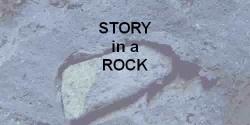Let the rocks tell their story
Circles of Mystery - Agates, Geodes and Spherulites
Agates develop as secondary deposits in hollow cavities, called vesicles.
Most of the world's agates developed in ancient volcanic lava.
Silica rich fluids fill a cavity and as the liqid cools down the silica precipitates.
In an agate the silica deposits over the entire inner surface of the cavity.
The fluid can cool quickly, drain, then heat up and fill the cavity again and again.
Different colours are caused by changes in the fluid chemistry over time.
Geodes also form in vesicles (hollow cavities ), mostly in volcanic rocks.
However when the silica rich fluids cool , they find points of nucleation (sites where individual crystals can grow.
The crystals grow inwards from the walls arth right angles.
The fluid maintains a steady temperature over a period of time.
The longer the time the bigger the crystals can get.

Spherulitic Dolerite is formed by igneous processes.
Essentially a large mass of diorite rock begins to cool and form acicular (needle -like crystals of plagioclase feldspar.
But then the cooling regime changes and the mass of diorite rock undergoes large supercooling (like glass).
The acicular plagioclase crystals aggregate (collect together) and form sphere-like masses.
The largest crystalsform on the insdie of the sphere and as the rock mass cools
successive layers of smaller and smaller crystals adhere and form concentric ring-like sturctures.
Learn more about ROCKS AND MINERALS this site

